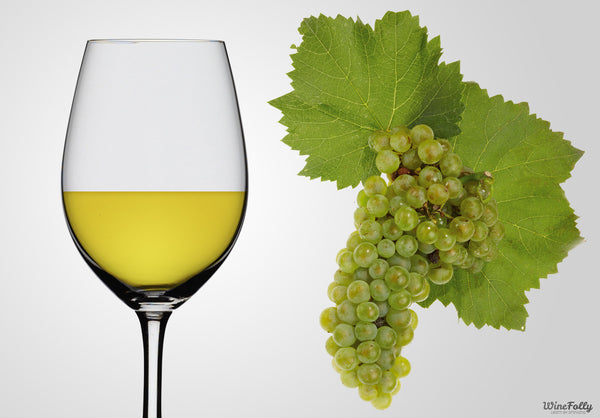Chardonnay Wine: Exploring the World’s Most Loved White Wine
Nov 06, 2024
Chardonnay Wine: Exploring the World’s Most Loved White Wine
Chardonnay, known as the "Queen of White Wine," is popular worldwide. It grows in almost every wine-producing area.
Chardonnay is popular for its versatility and rich flavours. It comes from famous vineyards in Burgundy, sunny California hills, and cool New Zealand coasts. This flexibility lets winemakers use different techniques. This results in wine with many flavour options and styles.
What Makes Chardonnay So Unique?
At its core, Chardonnay is a blank canvas. The grape has a neutral taste.
This allows its flavour to be shaped by where it is grown and how it is made. In cooler places like Chablis in France, it has a fresh, steely taste. You can find hints of green apple, lemon, and chalky minerals, which show the limestone soils below.
In warmer places like Napa Valley and Australia, wines have a riper taste. They often include tropical flavours like pineapple, mango, and a hint of butterscotch.
But Chardonnay’s magic lies in the winemaking. Oak aging creates rich, creamy textures and flavours like vanilla, caramel, and spices. This process produces the well-known "buttery" Chardonnays that became popular in California.
Alternatively, unoaked Chardonnays have a bright, fruity taste with clean, crisp acidity. This makes the wine show the true character of the grape. These stylistic choices make Chardonnay a favorite for winemakers. They can be creative while still honoring the grape's natural charm.
Iconic Regions and Styles of Chardonnay
Burgundy, France: Burgundy is the birthplace of Chardonnay, producing some of the world’s most prestigious wines. Chablis, located at the northern end, offers crisp wines with strong mineral flavors and sharp acidity. Wine enthusiasts know the Côte de Beaune, especially Meursault and Puligny-Montrachet, for its rich, oak-aged Chardonnays. These wines have nutty and buttery flavors.
California, USA: Napa Valley and Sonoma are famous for rich Chardonnays. These wines have tropical fruit flavors and a creamy texture. This creaminess comes from malolactic fermentation and barrel aging.
The California coast, especially the Sonoma Coast and Santa Barbara, has a cooler climate. This climate helps create wines with higher acidity and a good balance of fruit and minerality.
Australia: Australian Chardonnay, especially from Margaret River and the Yarra Valley, blends fruit-forward flavors with bright acidity. This creates a balanced wine that pairs well with food.
The Adelaide Hills region has a cooler climate. This helps produce Chardonnays with citrus and stone fruit flavors. These wines often have little oak influence.
New Zealand has cooler areas, like Marlborough, that make Chardonnays with crisp acidity and bright fruit flavors. In contrast, the warmer Hawke's Bay region produces a rounder, fuller-bodied style.
Food Pairing with Chardonnay
Chardonnay’s versatility extends to the table, where it pairs beautifully with a wide array of dishes:
Unoaked Chardonnay has fresh acidity and pure fruit flavors. It goes well with lighter dishes like shellfish, sushi, goat cheese, and fresh salads. Also, it serves as a great match for acidic foods like tomato-based dishes and ceviche.
Oaked Chardonnay: The rich, buttery character of oaked Chardonnay is ideal for creamy dishes and roasted flavors. Try it with lobster, creamy pasta sauces, roast chicken, pork, and mild, buttery cheeses like Brie. Its texture and flavors balance the weight of these dishes, enhancing both the wine and the food.
Tips for Selecting and Serving Chardonnay
Ageing Potential: Many people enjoy Chardonnays when they are young because of their fresh, vibrant flavours. Some high-quality wines come from Burgundy, California, and Australia. These wines can age for ten years or more. Aging often adds complexity, bringing out nuances of nuts, honey, and dried fruit.
Serving Temperature: Chardonnay is best served slightly chilled, around 10–13°C (50–55°F), to allow its full array of flavors to shine. Too cold, and the subtleties can be muted; too warm, and it may feel overly rich.
Glassware: A larger, bowl-shaped glass is ideal for oaked Chardonnays, as it captures and concentrates the wine’s aromas. For unoaked Chardonnays, a slightly smaller glass can maintain the wine’s crisp and vibrant profile.
The Future of Chardonnay: Trends and New Approaches
Winemakers today are trying new methods with Chardonnay. They are using fermentation vessels like concrete eggs and amphorae. These vessels add texture without hiding the fruit's flavor. Additionally, low-intervention winemaking and organic farming practices are on the rise, focusing on sustainable vineyards and purer expressions of Chardonnay’s terroir.
Final Thoughts: Why Chardonnay Is a Must-Try
Chardonnay has a wide range of flavors. It goes from the mineral elegance of Chablis to the rich taste of Napa.
This variety has earned it many fans. Whether you’re a fan of crisp, clean whites or creamy, full-bodied wines, Chardonnay has something to offer. Explore the diverse world of this popular white grape. Learn why Chardonnay remains a favorite in cellars and on tables everywhere.
See Lyndhurst Wine's Chardonnay collection to choose your own wine !
For more information about Chardonnay Wine, please refer Wine Folly.


